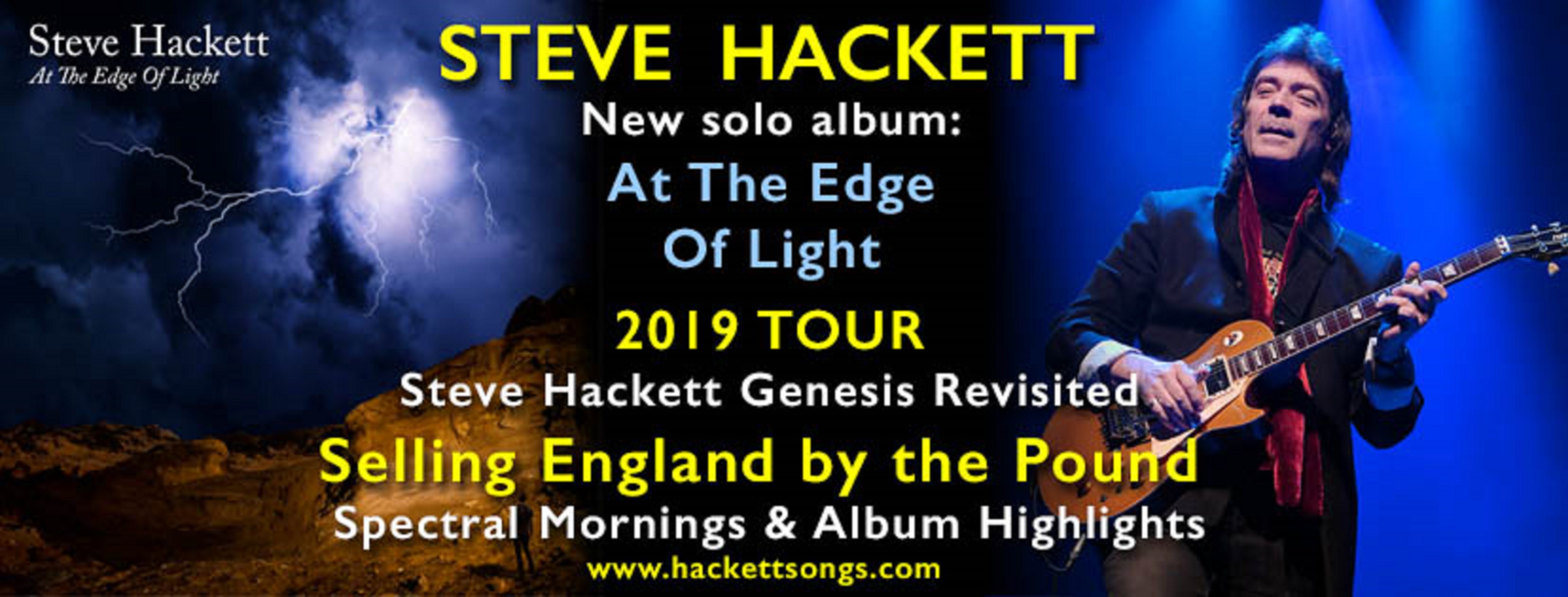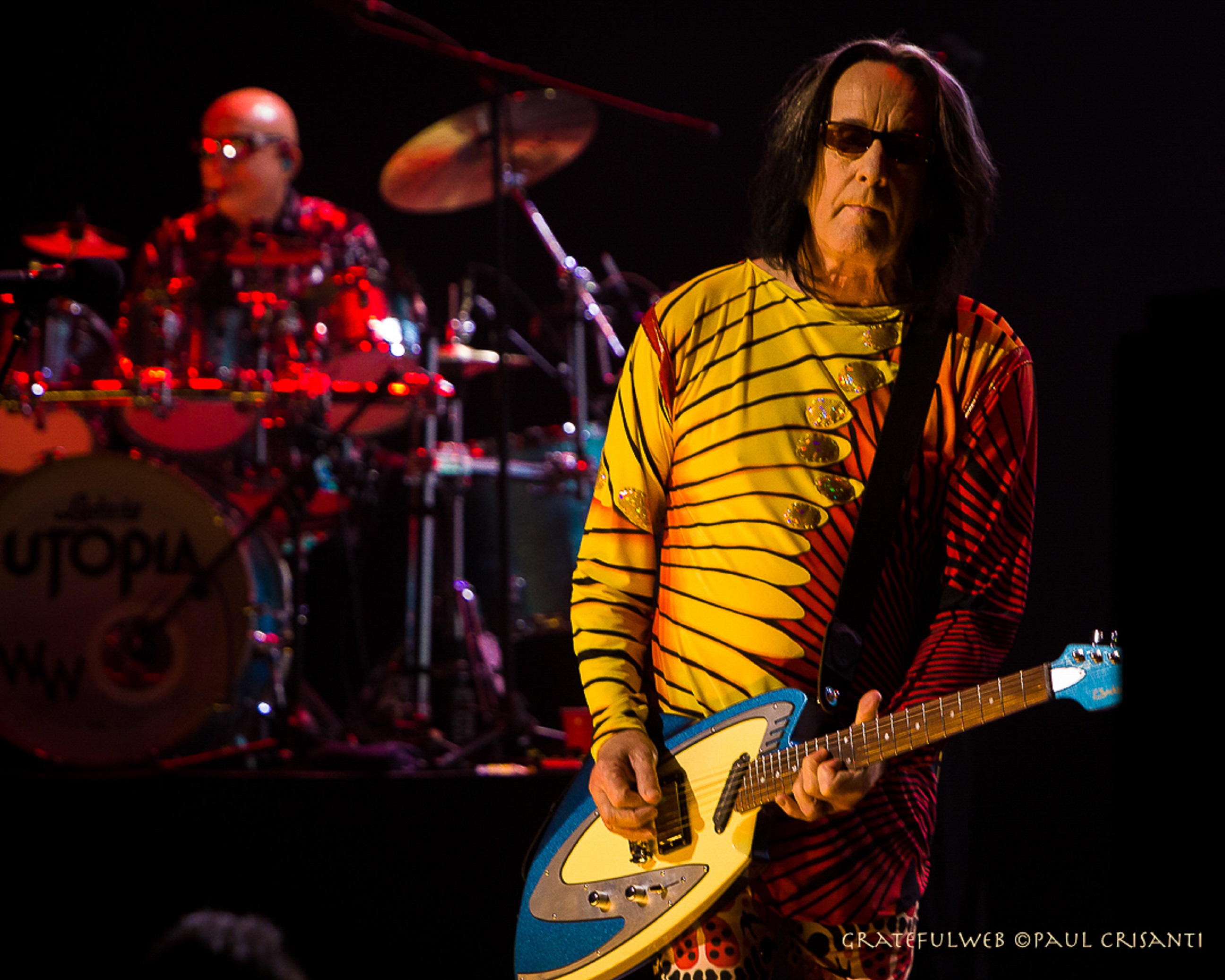The difference between the songs we feel, as opposed to those we simply hear, is what lies in between. You can’t help but feel “Edge of Light,” a new studio album by former lead guitarist for Genesis, Steve Hackett. The album, to be released January 25, 2019, takes the listener on a musical journey with an eclectic assortment of instruments delivering powerful rock and orchestral arrangements. When the journey ends, you’ll want more. Fortunately, he’ll be following up the release with a Genesis Revisited tour beginning in April to celebrate “Selling England by the Pound” and Spectral Mornings.” It was my pleasure to speak with him recently about the impact his global travels have on his music and to get his take on the evolution of music then and now.
GW: The new album, “Edge of Light,” is like going on a journey, not just from one song to the next but within the songs themselves. For instance, the suspenseful orchestra that starts the song, “Beasts in Our Time” is followed by a rock guitar solo at the end that really packs a punch. Yet, in between, the vocals, sax, and flute bring a sense of calm, hopefulness. Was that your intent for the album at the outset or is that the result of the process you went through in putting the album together?
SH: That’s so interesting that you mention that particular song. If you listen to only one track, listen to that one. I love the sound; unusual harmonies, you feel something is brewing. It’s dramatic. It was originally intended to be the first track of the album because it’s firing on all cylinders.
GW: The song you chose for the first track, “Fallen Walls and Pedestals,” sounds like the revolution is coming.

SH: Yes, exactly. Slow and fast, it starts powerfully with marching drums before it becomes orchestral. It’s a fast sequence of events. Audiences have a short attention span; there are more changes in the 1st 15-20 seconds, more than I’ve ever tried before. I don’t write chronologically; I work on separate things; one song at a time until all content is complete. Then I work on the order. There was a thread that runs through the lyrics and instruments, the idea of crumbling empires and that’s what drove me.
GW: Why was that?
SH: I travel a lot. I visited Jordan and saw some extra places like Petra. It was like Indiana Jones. A city of rocks, sculpted, fixed, monolithic. I went to Jerash, Jordan and to Turkey. To think of a once great empire, I had that sense of that foreign edifice going on which influenced my recording. Some places specifically were influences, Roman/Greek ruins, Arabian.
GW: That explains the striking album cover photo. Where was that taken?
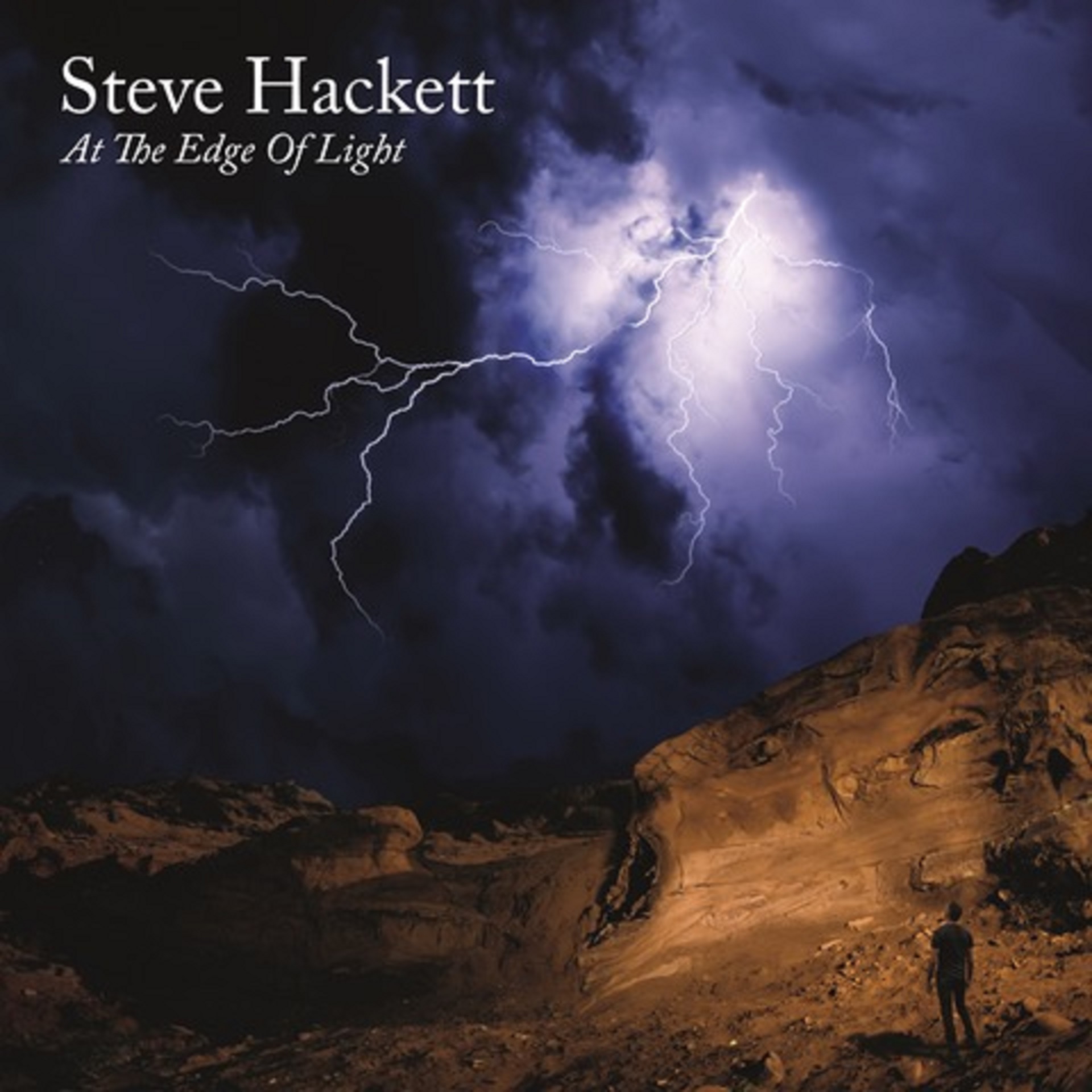
SH: The cover was photo-shopped, in the imagination of wonderful photographers, Angela and Maurizio Vicedomini. I traveled with them. The natural formations look sculpted, like they can’t entirely be natural.
GW: I noticed the faces in the rock formations in that photo.
SH: They were working in Germany when they put that together. The menu page with the DVD will have a star field with lightning.
GW: There’s a great pace of the drums in “Under the Eye of the Sun.” Of all the songs on the album, that one evoked some memories for me of earlier Genesis and even Yes’s album, “Fragile.” Have you heard this kind of feedback about your more contemporary music?
SH: Amanda Lehmann’s vocals contributed to that song, we tracked several times. The pace is more Yes-like, I’m just going to go with that aspect. In fact, while I was with Genesis, I met Yes’s Chris Squire, so talented. We did a several numbers together. I was asked to join Yes. I was so flattered. He and I shared an appreciation for orchestral music (we were both choir boys), harmonies, specialized. Only a few guitarists like playing with orchestras. We liked violins, viola, cello and Bach, the basis of guitars (they’re all string players), we don’t draw a distinction between the instruments. Many balk at the idea of symphonies with guitar. I also admire Jeff Beck, King Crimson, Queen. I did eight dates in the UK recently with an orchestra; it went phenomenally well. Starting tomorrow, I’ll be working on that.
GW: Is that your next album?
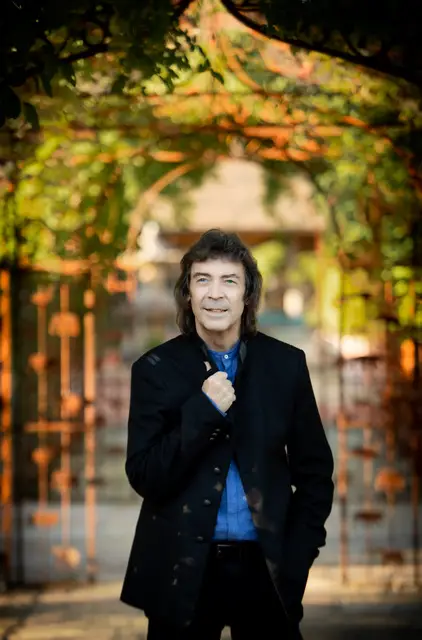
SH: I heard lots of orchestras, and this is more than any other rock album I’ve done, at least 2, with nylon guitars with philharmonic orchestra. If you broaden your thinking, an orchestra can be any size. It doesn’t have to be big. Sound can be big. The last two albums were with an orchestra. We used a Tar. We used a Sitar from India. Stringed instruments, unlikely instruments, like Didgeridoo. You’ll hear the Sitar and flute, violins and rock.
GW: As you said, there’s such a range of musicality on the album including a wide variety of musical instruments, not to mention the vocals and chorus. They all play off each other to conjure up a range of emotion for the listener; suspense, curiosity, serenity. That’s rare in music these days. Do you notice that and do you think that simplicity has any relevance with the current state of the world?
SH: I came to the conclusion, when exposed to rock, it was exciting. Then big films took on the same influence as what rock did. Groups and orchestra, the power of film, soundtracks, were bigger than rock. With rock, you had a close mike and a few players in your face. With an orchestra, percussion, it’s like watching a movie. Size, drums you know an army is coming. The influence of films diminished the appeal of music video, extra perspectives. We need to broaden rock. I always wanted to bring scores/tribes together. Orchestras don’t have the defining edge of rock. It’s like the Queen Mary floating off somewhere. I want that to happen orchestrally, chorally to have changes addressing diminishing audiences, nail the color to the mask. You give what you get in film for the ear rather than eye. It’s unpopular to be popular; you’ve got to swim against the tide. I’ve been told this all of my life, go out on a limb. I’ve got a global way of thinking about my music (comprehensive, all inclusive, progressive, fusion). Not all over. Formats tighten up, that’s what happened in the 70’s. The best albums had a tighter leash. I think, let it all hang out, be experimental try to push it.
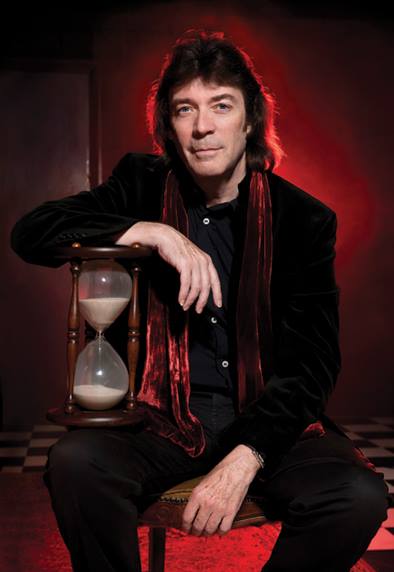
GW: Given the complexity of the album, how did you and the others collaborate?
SH: When I was young, I was accepting. But ambitions change. I used to stare at guitars in windows and say, "that’s what I need.” You need a racing car to race laps around the circuit. You need proven tools to do that. Who wouldn’t be freaked to join a band, write a song, make an album or work with an orchestra? I’m very lucky, life could have taken a turn for me, but I’m an idealist. The people I work with, the core band, that’s key. I add the best around the world. The song “Underground railroad” is authentic, gospel vocals with Pink Floyd’s Durga McBroom. The women on the album are amazing, Loreley, I met them on a boat tour. With such vocal style, you have broader palette.
GW: I didn’t see U.S. tour dates listed; do you have plans to come to the U.S.?
SH: We’ve got 160 tour dates through the world, we’ll be touring Selling England By The Pound, Spectral Morning, plus more to be added for U.S. There are so many dates, too many to list. Where are you in the U.S.?
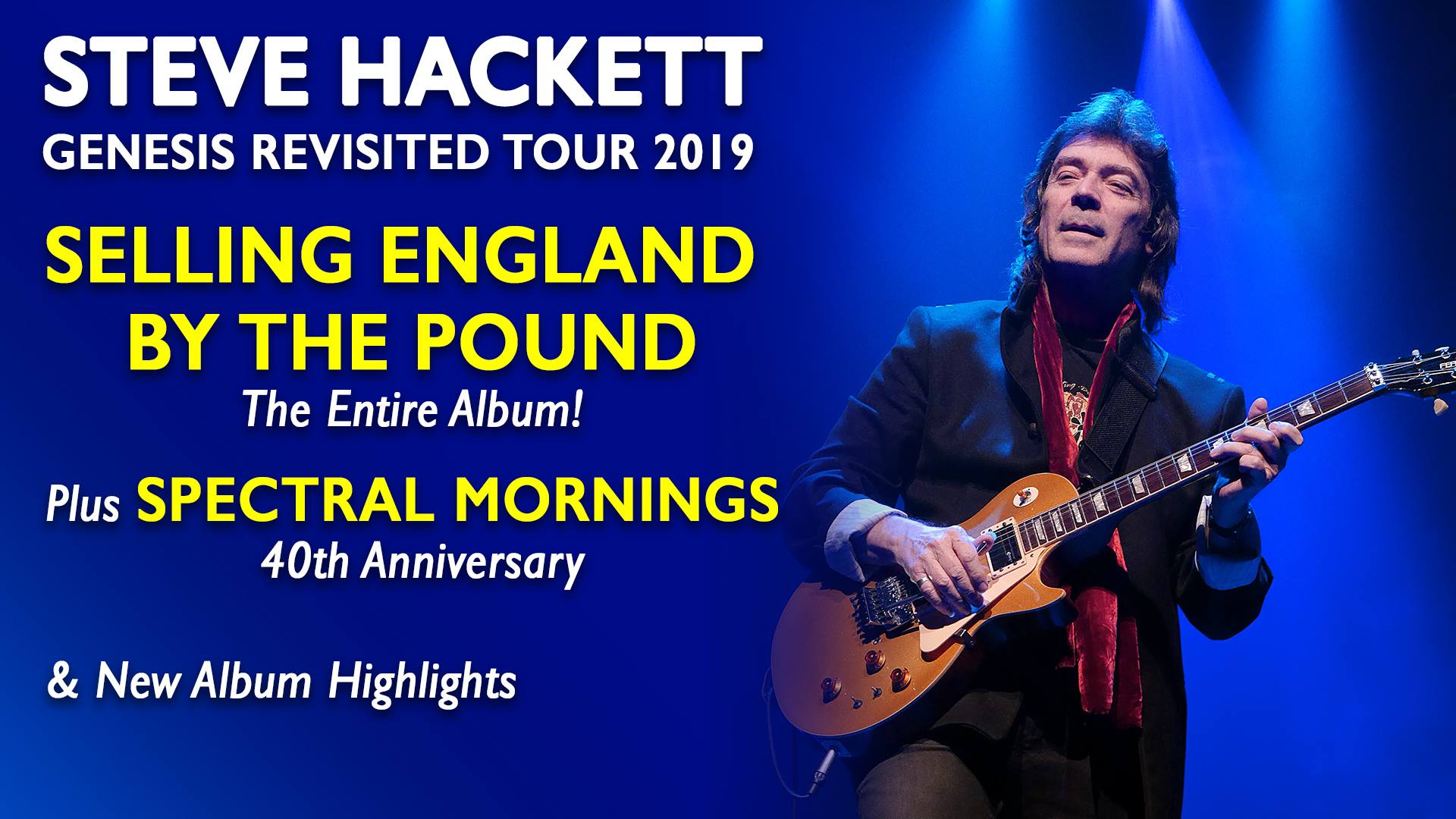
GW: On the East Coast, right outside of NYC. We have great venues here, Philly, NY, Connecticut. I guarantee sold out shows.
SH: I love all those places. Connecticut, I have lots of memories there. Bruce Willis came to the show. He plays the harmonica! It always surprises me, who the fans are.
GW: I’ll be looking forward to seeing you here in the U.S. for the tour. Do you still stay in touch with the other members of Genesis?
SH: I do stay in touch. In fact, I was with Peter recently when he was releasing his book.
Let’s hope we can see them all together again soon.





